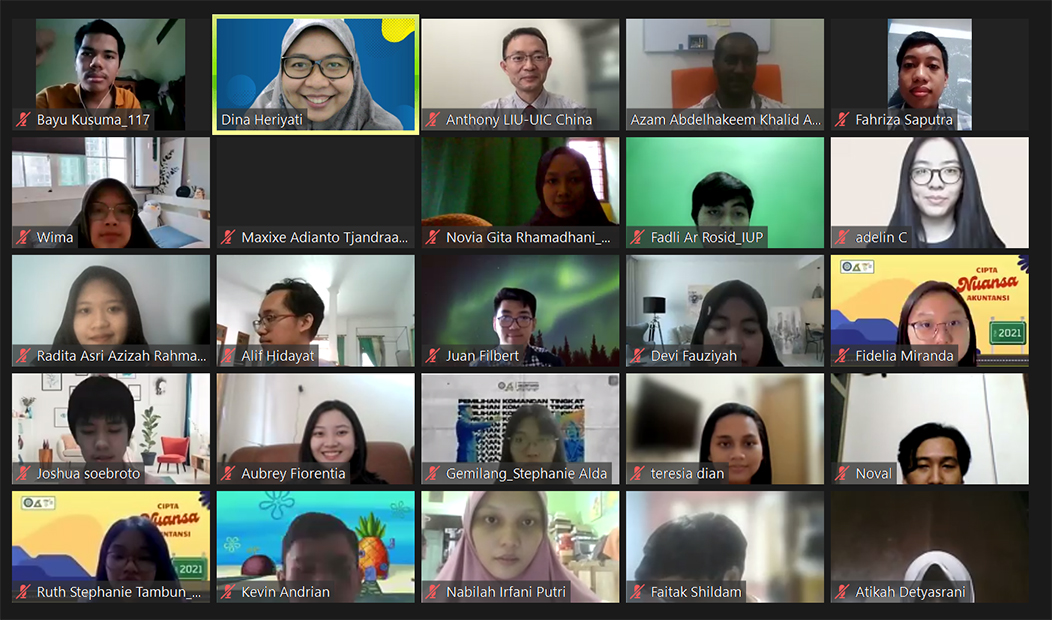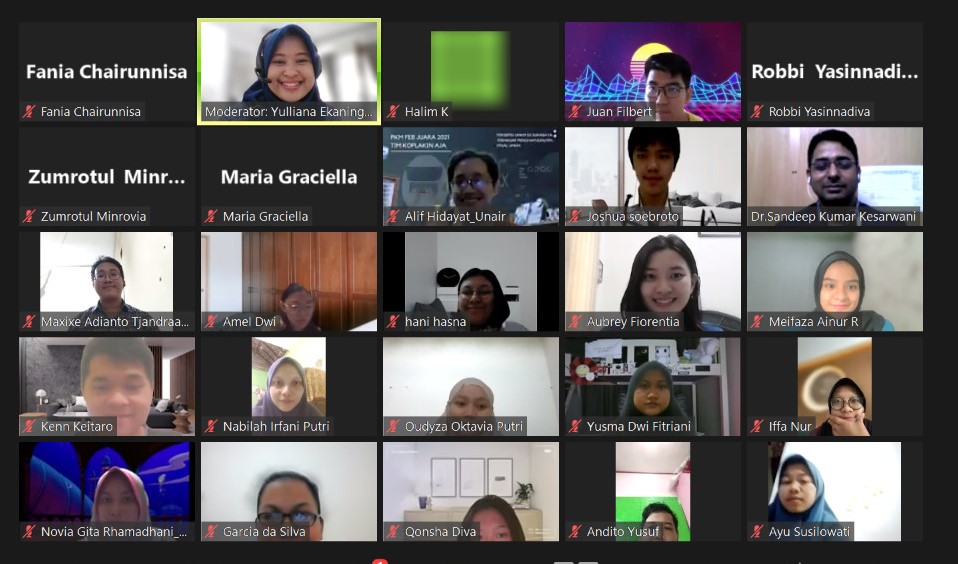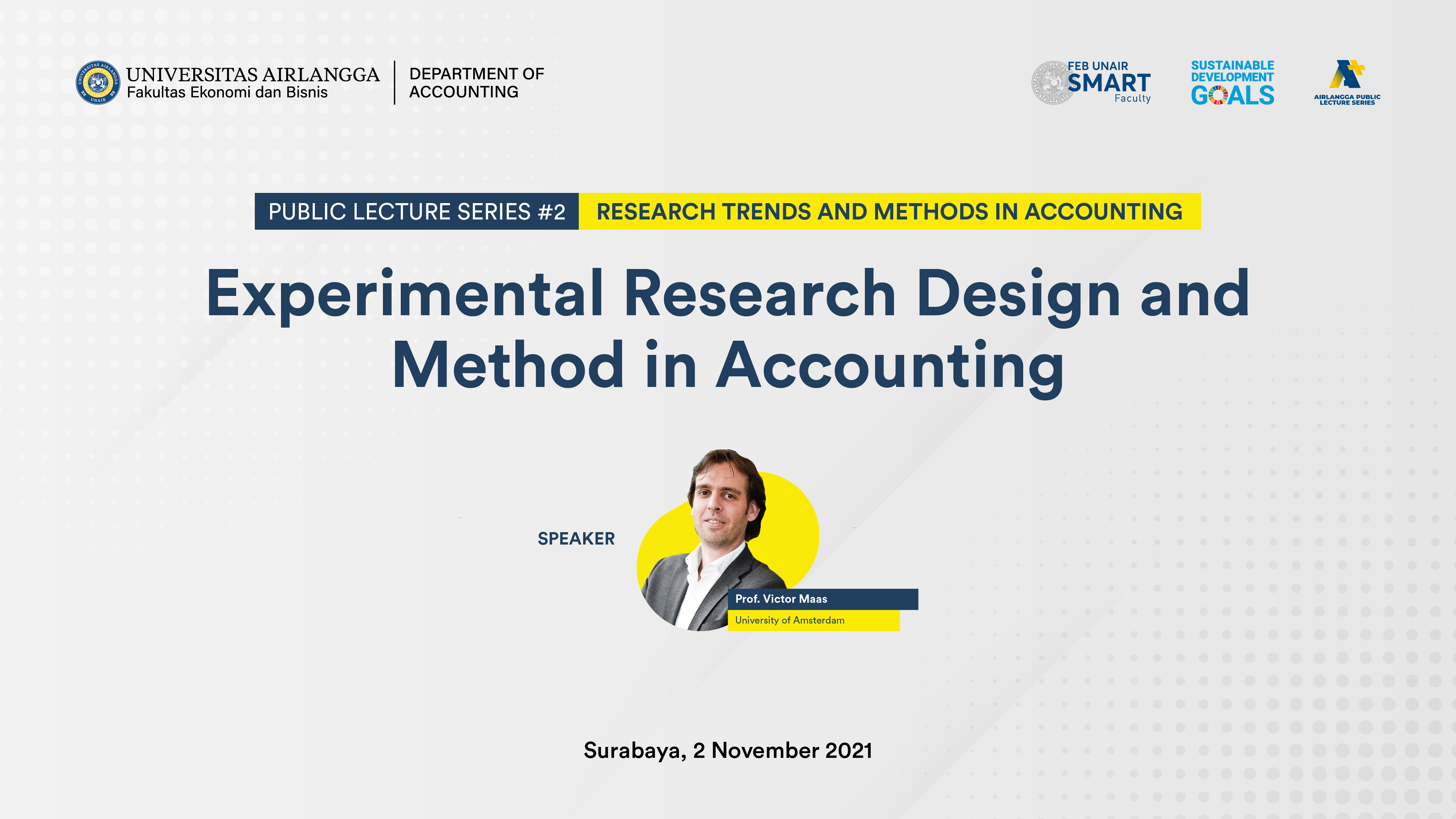Professor of Accounting at the University of Amsterdam, Victor Mass, commented that transparency is important for organizations and that management accounting and control systems play a big role in organizations because they determine the horizontal transparency in organizations which play a big role in how people see them own situation and how they decide to behave on the job. He pointed out that people prefer to conform to social norms and need to work together and transparency facilitates these. Transparency will determine the effort people put into their job. He stated this in the 2nd session of the Guest Lecture with the theme: Transparency in Organizations: How Management Accounting Systems Affect Who Knows What, and Why That Matters on Monday, 31st May 2021. The session was moderated by one of the lecturers of Accounting in Universitas Airlangga, Wulandari F. Ekasari., M.Sc., CA.
He started off by stating several questions about the transparency of an organization, then continued in explaining that transparency in organizations is important because it determines how organizations work and how management accounting and control systems are one of the factors that define how transparent organizations are. Management accounting and control is about how people higher up the organization want people lower down in the organization to do and all the mechanisms that they have to get these people to do that, and also getting information about the lower levels up to higher hierarchy of the organization to know what the organization needs to do, hence, management accounting and control deals a lot with vertical transparency, but because of that focus on vertical transparency, horizontal transparency has been largely ignored, until recently in the literature that by having a certain accounting and control system, is also influencing how people at the same hierarchical level know about each other's situation. There is also diagonal transparency where it shows how a worker knows about their colleagues' managers and vice versa. These types of transparency play a big role in how someone sees their situation.
“In many countries right now, people have been working at home and that gives them less transparency because they are just staying at home and don't see what their colleagues are doing on a daily basis. However, working while seeing your colleagues on a screen actually gives people ideas on what their colleagues are doing and it gives strong incentives to people to also expose themselves and show that they are good employees by always being online.” Said Victor when telling about the current situation. “And I think technological advances such as Zoom have actually changed how transparent organizations can be.” He added.
He explained that there are some things that need to be transparent in organizations such as decisions, performance, ability, effort, (good or bad) luck, risks taken, local environmental conditions, working conditions, performance evaluations, salaries, variable pay, etc. . He believes that organizations have the choice to be transparent, for example in the middle of the work from home situation with a lot of technological advancements, if there is a company with various sales people in several different countries, the company can choose to leave them in the dark of what other salespersons are doing or held a weekly online meeting where they can meet each other to share their working conditions and experiences with each other.
Furthermore, he explained that there are three mechanisms that organizations can use to achieve horizontal transparency, the first one is all kinds of deliberate information policies, such as performance reports, budgets, contracts, newsletters, etc. These are things to make organizations more transparent. “When I was a department head at my own university, I typically got to see all the financial results, not only from the accounting department where I was the head of, but I could also see the other departments. But there are departments that are slightly different in location, so I didn't get to see the financial figures of those departments so that made my relationship with those people different because I didn't know what they were doing.” Said Victor about his personal experience as the head of the accounting department at the University of Amsterdam.
He continued explaining the second mechanism, which is the physical and organizational barriers such as office layouts, working from home policy, access to databases, etc, which contributes to how much employees know each other. The third and last one is aggregation such as segment reporting, cost categories, etc. He also stated that transparency is on a continuum from organizations that actively try to restrict access to information so deliberately intransparent to on the other side of the continuum which organizations that try to actively focus on the attention of people to information.
He emphasized that if organizations increase transparency, there are two things that will happen: you know more about your colleagues but they also know more about you. Together, they can create complex responses. Behavioral economics/psychology literature points out a much wider range on why transparency matters, there are 4 of them: social norms, facilitation of cooperation, reference point shifting, and status incentives and image concerns. He also showed graphs on how transparency affects how organizations work.
This guest lecture is available on the Department of Accounting's YouTube Channel
(BLQ/DNH)
























